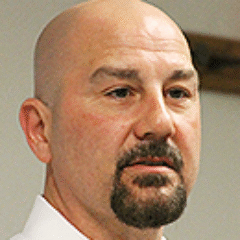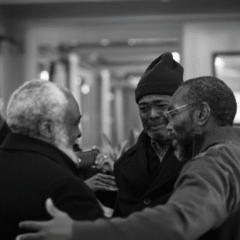Wrongful convictions rob innocent people of decades of their lives, waste tax dollars, and retraumatize the victims’ families, while the people responsible remain unaccountable.
200
Since 1976, at least 200 people have been exonerated from death row in the U.S.
5:1
For every 5 executions in Ohio, 1 person has been exonerated.
21
Ohio death row exonerees spent an average of 21 years in prison
216
Ohio death row exonerees were incarcerated for a combined 216 years for crimes they did not commit.
Ohio’s death row exonerees

GARY BEEMAN was sentenced to death in 1976. His conviction was based on perjured testimony from a prison escapee who Beeman’s lawyers were prevented from cross-examining. During Beeman’s retrial, five witnesses testified that the testimony during the initial trial and that the star witness from 1976 was the killer, not Beeman. Beeman was acquitted in 1979.
DALE JOHNSTON was sentenced to death in 1984 for the murders of his stepdaughter and her boyfriend. After undergoing hypnosis, a sole eyewitness identified Johnston as the killer. The only other primary witness provided boot print evidence that was later discredited. The authorities also knew four other eyewitnesses with completely different stories of the crime, but they never disclosed them to the defense. Johnston was eventually released in 1990.


TIMOTHY HOWARD and GARY LAMAR JAMES were convicted of a murder during a bank robbery in 1976. They were released after new, previously undisclosed evidence was discovered. The evidence wasn’t presented at their trial and included conflicting witness statements and fingerprints. Their charges were dismissed in 2003.
DERRICK JAMISON was sentenced to death in 1985 for the murder of a Cincinnati bartender. Prosecutors withheld critical evidence that would have pointed to Jamison’s innocence, including eyewitness descriptions and statements contrary to the story told by Jamison’s co-defendant. Jamison’s charges were dismissed in 2005, twenty year after he was sent to death row.


JOE D’AMBROSIO was sentenced to death in 1989 for the murder of Anthony Klann. The federal district court overturned his conviction because the state had withheld evidence from the defense that proved his innocence. The court then barred his re-conviction trial due to further prosecutorial misconduct. D’Ambrosio’s charges were dismissed in 2012, twenty-three years after he was sentenced to death row.
RICKY JACKSON, WILEY BRIDGEMAN, and KWAME AJAMU were sentenced to death for the 1975 murder of a money-order salesman in Cleveland. The state’s case relied on testimony from a 12-year-old who identified the three men as the perpetrators of the crime. In 2014, the witness recanted his testimony and admitted to being pressured by law enforcement to make the false identification. The men spent a combined total of nearly 90 years in prison and would have been executed in the 1970s had the U.S. Supreme Court not ruled the death penalty unconstitutional in their case.


CHARLES TOLLIVER was convicted in Ohio by an all-white jury. His case was reversed because of the discriminatory use of peremptory strikes, a tactic used to remove jurors of the same race as the defendant from the jury. He was granted a retrial and subsequently acquitted.
THOMAS PEARSON was convicted in 1976 for the murder and robbery of Joseph Witcraft. Pearson was implicated by Avila Chambliss, who also implicated a third man, Samuel Taylor. Pearson was tried individually and was convicted of aggravated murder, aggravated robbery, and kidnapping. This conviction was vacated on appeal because the only evidence connecting the defendants with the crime was the uncorroborated testimony of an accopmlice.
